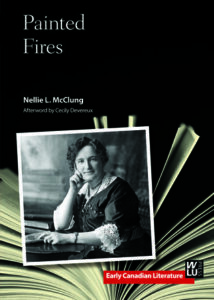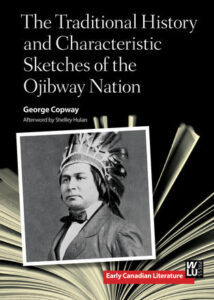I’m enormously pleased to announce that my three-volume critical anthology The L.M. Montgomery Reader (University of Toronto Press) has won the 2016 PROSE Award for Literature, an award presented by the Professional and Scholarly Publishing Division of the Association of American Publishers.
Blog
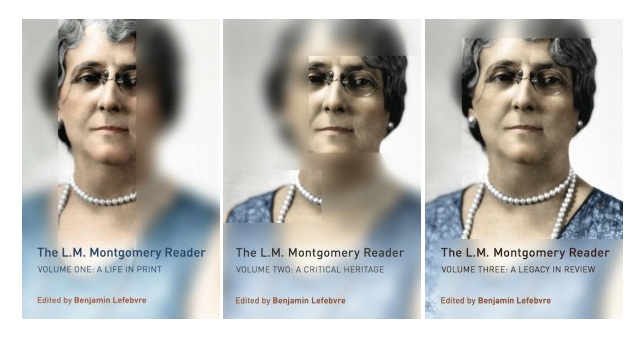
I’m pleased to announce that all three volumes of my critical anthology The L.M. Montgomery Reader are now available as a hardcover set from University of Toronto Press!
A tremendous resource for fans and scholars alike, the three-volume The L.M. Montgomery Reader gathers together a captivating selection of material, much of it recently rediscovered, on the life, work, and critical reception of one of Canada’s most enduringly popular authors.
Collecting material on Montgomery’s life (Volume One), her critical reputation (Volume Two), and reviews of her books (Volume Three), leading Montgomery scholar Benjamin Lefebvre traces the interplay between the author and the critic, as well as between the private and the public Montgomery. Each volume includes an extensive introduction and detailed commentary on the documents that provides the context for these primary sources, many of them freshly unearthed from archives and digital collections and never before published in book form.
These volumes have received tremendous praise from reviewers:
“While Lefebvre’s The L.M. Montgomery Reader is a vital resource of primary sources from and secondary assessments of one of Canada’s most popular twentieth-century authors, it is his insightful and knowledgeable analysis that shapes and gives meaning to the collection. . . . The depth of his knowledge results in a work that is as comprehensible as it is comprehensive.” –André Narbonne, American Review of Canadian Studies
“Lefebvre’s archival research is thorough and often brilliant, making the Reader an invaluable trove not only for Montgomery scholars but also for those working with the reception history of Canadian writers, especially women before Laurence, Munro, and Atwood. For Montgomery completists, the Reader is irresistible. For those engaged in Montgomery studies or Canadian literature more generally, it is invaluable.” –Anne Furlong, University of Toronto Quarterly
“With this volume, Lefebvre broadens our understanding of Montgomery’s reception and reputation both within Canada and internationally, unearthing previously obscure content and commentary and making it accessible to a far wider audience. This reader will thus prove a valuable resource to both existing and future scholars of Montgomery’s work and life, as well as those fans keen for a little more insight into the ever-elusive figure of L.M. Montgomery.” –Sarah Galletly, British Journal of Canadian Studies
“Lefebvre has uncovered a cache of new, important material in an already impressive and crowded field of Montgomery scholarship. . . . His sensitive editing of the material brings the public side of Montgomery into better focus as she fields endless questions about how she became a writer, how Anne came to be and whether or not she was a real girl and what the author thought of young women in her day. [This book will] deepen our knowledge and understanding of this beloved Canadian icon.” –Laurie Glenn Norris,Telegraph–Journal (Saint John, NB)
“Lefebvre has thoroughly mined earlier scholars’ bibliographies and online newspaper archives to find reviews in periodicals from eight different countries, including theBookman (London), the Globe (Toronto) and Vogue (New York). . . . Collectively, these reviews . . . represent a superb barometer of [Montgomery’s] fluctuating cultural value as a writer.” –Irene Gammel, The Times Literary Supplement
The three-volume set as well as individual volumes can be obtained directly from University of Toronto Press or from your local bookseller.
The Fall 2015 newsletter of the Association of Canadian College and University Teachers of English (ACCUTE) includes my member-organized panel on Crossover Texts, which I proposed for the 2016 conference that will take place on 28–31 May 2016, during the annual Congress of the Humanities and Social Sciences held at the University of Calgary. Proposals and inquiries are warmly welcomed! The deadline for submissions is 1 November 2015.
Crossover Texts
Organizer: Benjamin Lefebvre (Ryerson University)
The term “crossover fiction” refers usually to texts that cross the boundary between children’s literature and adult literature, in terms of target readership and genre. While there are countless examples of texts that were published for one group but embraced by readers of all ages, the term can also be applied to texts that require some form of textual transformation and texts that fit imperfectly within textual categories.
For this panel, I invite proposals for papers that consider crossover texts of any kind and by authors of any cultural group, including the following:
- Adaptations or reworkings across media (including oral storytelling, commodities, and tourism) or within one medium;
- Adaptations across genres and readerships, such as YA novels made into films for a general audience;
- Transmedia storytelling and questions of authorship, ownership, and branding;
- New and/or transnational editions, including attempts to revise problematic older texts and to redesign books from one genre to fit within another;
- Versions across authors’ careers, including shifts from periodical to book publication and authors’ revisitations of their own work;
- Movements from “high” (literary) genres to “low” genres (fantasy, romance, detective) and formats (comics and graphic novels);
- Texts by minoritized authors that cross over from niche publishing to mainstream success;
- Rewrites across cultures, national boundaries, and age-based readership categories, including revisionist texts, mash-ups, and parodies.
Please send the following to the panel organizer at benjamin.lefebvre@ryerson.ca by 1 November 2015: a file containing a 300- to 500-word paper proposal, with no identifying marks of any kind; a file containing a 100-word abstract and a 50-word biographical statement; the 2016 Proposal Information Sheet available on the ACCUTE website. You must be an ACCUTE member in good standing to apply for a member-organized session.

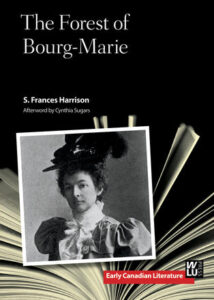
I’m pleased to announce the publication of the fifth and sixth volumes in the Early Canadian Literature series published by Wilfrid Laurier University Press: S. Frances Harrison’s The Forest of Bourg-Marie (1898), with an afterword by Cynthia Sugars (University of Ottawa), and Frederick Niven’s The Flying Years (1936), with an afterword by Alison Calder (University of Manitoba).
In The Forest of Bourg-Marie, originally published in 1898, Toronto author and musician S. Frances Harrison draws together a highly mythologized image of Quebec society and the forms of Gothic literature that were already familiar to her English-speaking audience. It tells the story of a fourteen-year-old French Canadian who is lured to the United States by the promise of financial reward, only to be rejected by his grandfather upon his return. In doing so, the novel offers a powerful critique of the personal and cultural consequences of emigration out of Canada.
In her afterword, Cynthia Sugars considers how The Forest of Bourg-Marie reimagines the Gothic tradition from a settler Canadian perspective, turning to a French-Canadian setting with distinctly New-World overtones. Harrison’s twist on the traditional Gothic plotline offers an inversion of such Gothic motifs as the decadent aristocrat and ancestral curse by playing on questions of illegitimacy and cultural preservation.
Originally published in 1935, Frederick Niven’s The Flying Years tells the history of Western Canada from the 1850s to the 1920s as witnessed by Angus Munro, a young Scot forced to emigrate to Canada when his family is evicted from their farm. Working in the isolated setting of Rocky Mountain House, Angus secretly marries a Cree woman, who dies in a measles epidemic while he is on an extended business trip. The discovery, fourteen years later, that his wife had given birth to a boy who was adopted by another Cree family and raised to be “all Indian” confirms Angus’s sympathies toward Aboriginal peoples, and he eventually becomes the Indian Agent on the reserve where his secret son lives. Angus’s ongoing negotiation of both the literal and symbolic roles of “White Father” takes place within the context of questions about race and nation, assimilation and difference, and the future of the Canadian West. Against a background of resource exploitation and western development, the novel queries the place of Aboriginal peoples in this new nation and suggests that progress brings with it a cost.
Alison Calder’s afterword examines the novel’s depiction of the paternalistic relationship between the Canadian government and Aboriginal peoples in Western Canada, and situates the novel in terms of contemporary discussions about race and biology.
These books can be purchased either in print or in epub format directly from the publisher or from your favourite bookseller.
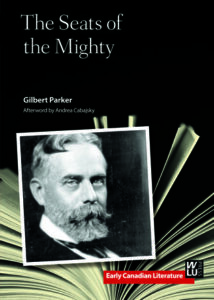
I’m pleased to announce the publication of Gilbert Parker’s The Seats of the Mighty, the fourth volume in the Early Canadian Literature series published by Wilfrid Laurier University Press. The edition contains the complete text of the original 1896 edition, Parker’s introduction to the “Imperial Edition” of the novel, published in 1913, and a new afterword by Andrea Cabajsky, who is also part of the series’ advisory board. The book can be purchased either in print or in epub format directly from the publisher or from your favourite bookseller.
From the pen of Gilbert Parker comes one of the most popular Canadian novels of the late nineteenth century. First published simultaneously in Canada and the United States in 1896, The Seats of the Mighty is set in Quebec City in 1759, against the backdrop of the conflict between the English and the French over the future of New France. Written and published after Parker’s move to England, the novel attempts to romanticize French Canada without alienating his English and American readership. The novel’s enduring popularity led to a stage version in 1897 and a silent film in 1914.
The next two volumes in the series, S. Frances Harrison’s The Forest of Bourg-Marie and Frederick Niven’s The Flying Years, are scheduled to be published in June 2015.
My friend Melanie Fishbane, upon receiving her copy of The L.M. Montgomery Reader, Volume 3: A Legacy in Review last week, took a couple of photos of the three volumes on her shelf, edited them through some sort of Photoshop/Instagram rinse, and then posted them on Facebook. The arrangement looked so neat that I asked her permission to repost it, which she graciously gave. Thanks, Mel!

I will be speaking at an event called The Canadian Home Front: L.M. Montgomery’s Reflections on War at the North York Central Library concourse next Tuesday evening, 27 January 2015. I’ll be talking about the responses Montgomery’s books published or set during the First World War received by reviewers (an aspect of Montgomery’s career that is covered in The L.M. Montgomery Reader, Volume 3: A Legacy in Review) alongside Laura M. Robinson and Melanie J. Fishbane. Hope to see you there!
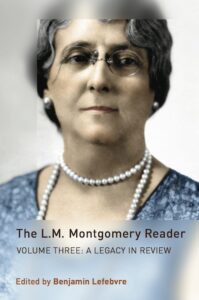
I’m pleased to report that I received my first author’s copy, a few days ago, of my seventh book, The L.M. Montgomery Reader, Volume 3: A Legacy in Review, published by University of Toronto Press. The book contains the full text of 370 reviews, from periodicals in eight countries, of Montgomery’s twenty-four books published throughout her lifetime, as well a comprehensive discussion of how these reviews fit within the larger context of the ways her books were marketed to readers during the first half of the twentieth century, as well as a comprehensive account of the reception of twenty-four additional Montgomery books published posthumously between 1960 and 2013. Since late November, I’ve been posting snippets of these reviews, as well as scans of ads that don’t appear in the book, on the L.M. Montgomery Online website.
I’m so happy with how this final volume, like the two that preceded it, turned out, and although it’s rather bittersweet for such a big project to come to an end finally after several years of work, it also gives me a chance to ponder what it is I’d like to work on next.
The book can be ordered directly from the publisher as either a jacketed hardcover or as an ebook, and it should start to be available through bookstores in the coming weeks.
Updating my web page for that volume also prompted me to update the pages for all my previous books: The L.M. Montgomery Reader, Volume 1: A Life in Print and Volume 2: A Critical Heritage; the collections of essays Textual Transformations in Children’s Literature (which recently came out in paperback) and Anne’s World: A New Century of Anne of Green Gables; the restored and annotated edition of L.M. Montgomery’s Great War novel, Rilla of Ingleside; and the edition of Montgomery’s long-lost final novel, The Blythes Are Quoted.
I recently did a short email interview with Open Book Toronto, in which I discuss some of my editorial process for the Early Canadian Literature series published by Wilfrid Laurier University Press.
I’m pleased to announce the publication of the second and third volumes of the Early Canadian Literature series published by Wilfrid Laurier University Press: an edition of Nellie L. McClung’s 1925 novel Painted Fires, with an afterword by Cecily Devereux, and an edition of George Copway’s 1850 book The Traditional History and Characteristic Sketches of the Ojibway Nation, with an afterword by Shelley Hulan. Both can be purchased either in print or in epub format directly from the publisher or from your favourite bookseller.
Painted Fires, first published in 1925, narrates the trials and tribulations of Helmi Milander, a Finnish immigrant, during the years approaching the First World War. The novel serves as a vehicle for McClung’s social activism, especially in terms of temperance, woman suffrage, and immigration policies that favour cultural assimilation. In her afterword, Cecily Devereux situates Painted Fires in the context of McClung’s feminist fiction and her interest in contemporary questions of immigration and “naturalization.” She also considers how McClung’s representation of Helmi Milander’s story draws on popular culture narratives.
The Traditional History and Characteristic Sketches of the Ojibway Nation (1850) was one of the first books of Indigenous history written by an Indigenous author. The book blends nature writing and narrative to describe the language, religious beliefs, stories, land, work, and play of the Ojibway people. Shelley Hulan’s afterword considers Copway’s rhetorical strategies in framing a narrative as a form of “history, interrupted” for a non-Indigenous readership.
